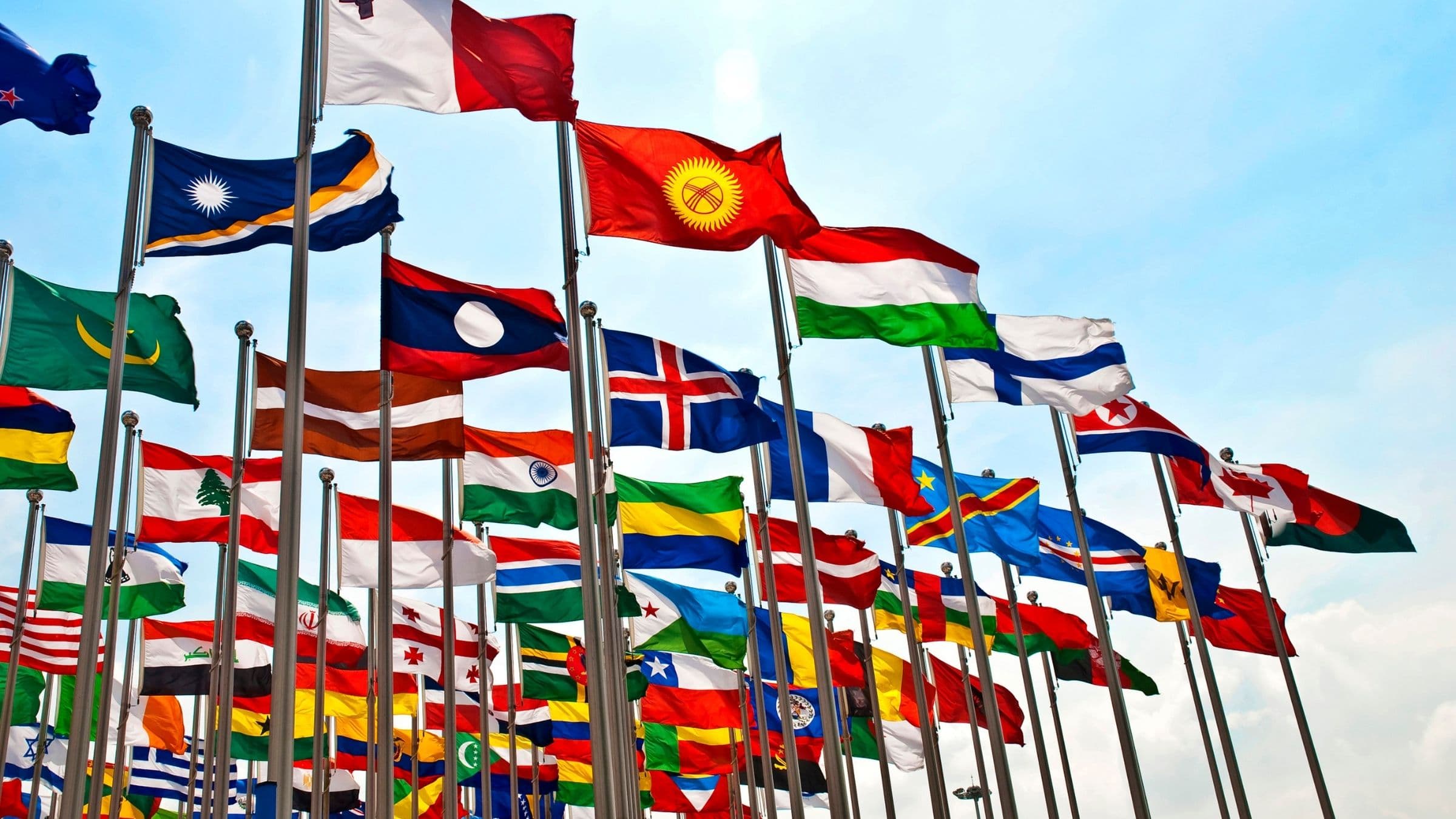
COUNTRY PROFILE
Discover more about the Kuwait market including overviews about the retail, foodservice, and food processing sectors. Events, resources, and more are linked throughout the profile.

3rd
top market in the region for U.S processed foods

$179.7 Million
total of U.S. processed foods imports in 2023
Euromonitor reports that the economy in Kuwait expanded in real terms in 2022, driven by increasing public and private consumption and capital investment. However, in 2023 the global economic slowdown, elevated inflationary pressures and tightening financial conditions undermined business and consumer confidence globally, raise uncertainty and weigh on the country’s economic outlook.
The population of Kuwait was estimated at 3.1 million in 2023 (CIA World Factbook Est.). Kuwait’s Public Authority for Civil Information estimates the country’s total population to be 4,420,110 for 2019, with non-Kuwaitis accounting for nearly 70% of the population. The median age was 30.1 years in 2023 and the population growth rate was 1.1%. About 106,000 Kuwaitis are over 65 years or 3.4% of the population.
Euromonitor reports that as a result of longer life expectancy and many workers moving into retirement over 2023-2040, ageing will accelerate with those aged 65+ surging rapidly. As the share of retirees reaches 20.6% of the total population in 2040, the old-age dependency ratio will climb putting more pressure on state resources, although the country’s sovereign wealth funds will be able to ease the stress on public coffers.
At the same time, the proportion of the working-age population will fall; however, the country’s reliance on foreign labor to keep the economy going will ensure that it remains relatively high at 60.2% in 2040. Indeed, foreign citizens will continue to make up a massive proportion of the total population at 69% in 2040. These changes in population structure will impact consumer trends, as lifestyles and habits change.
Kuwait ranked third in the region in the import of U.S. processed foods in 2022. They imported US$212.3 million in 2022, an increase of 20% from the prior year. In 2023 U.S. processed food exports have declined 15% to US$179.7 million. That equates to US$32.6 million since 2022 which adds to the U.S. trade deficit in food and agricultural products.
Top U.S. processed food exported to Kuwait in 2023 included:

$3.8 Billion
estimated total of retail sales of packaged food products in 2023

20.7%
increase in retail sales since 2019

$4.8 Billion
estimated in sales of packaged food products by 2028
Euromonitor has estimated 2023 retail sales in the Kuwaiti packaged food market to be US$3.8 billion, making them the 3rd largest market in the GCC-6. That also represents an increase of 20.7% and US$659 million from 2019. They also forecast sales of packaged food in the Kuwaiti market to reach nearly US$4.8 billion by 2028, an increase of US$781.6 million and 19.5% from 2024. High growth products in the forecast include:
Euromonitor reports that cooperatives (Co-ops) are the most important grocery retail format in Kuwait and all these stores are owned and operated by the Kuwaiti government, offering the full range of essential grocery items at prices that are subsidized and controlled by an official government agency. Given the strong business model and very robust structure that has been designed for co-op grocery retailers involving numerous key commercial partners and virtually all the most important suppliers of grocery items in the country, it is unlikely that co-ops will face any serious competition in the retailing of groceries, essential household items and a range of other consumer goods.
The popular Sultan Centre grocery retailer’s chain continued to expand towards the end of the review period (2024) with the addition of new stores and the exploration of new retailing concepts. The company operates outlets throughout Kuwait, including hypermarkets, supermarkets, and convenience stores. The company has directed its future strategy towards the goal of ensuring that it has a store in operation within a 10-minute drive of all inhabited areas of Kuwait and this was the basis of the opening of a new store in the Agailaya region during 2022.
The expansion of the retailer’s outlet network is expected to enable it to account for a high proportion of sales to grocery retailers, largely at the expense of small local grocers. The retailer is also very interested in developing its e-commerce operations, with the aim of offering standard delivery services within 24 hours and express delivery within 30 mins. Thus, the expansion of Sultan Centre’s network of retail stores will further enhance the company’s last-mile delivery capabilities and increase its capacity for online order fulfilment.
A major influence on demand for modern grocery retailers during the review period was the exodus of expatriates that was seen as a result of the Kuwaitisation programme and the COVID-19 pandemic, both of which resulted in narrowing employment opportunities for foreigners.
Modern retailing formats continue to dominate sales in grocery retailers in Kuwait, with hypermarkets being particularly popular. Modern retailing is popular among local consumers due to the extensive product ranges and one-stop shopping that it offers. Consumers generally prefer the layout of modern outlets where all products are available on shelves and with clear price indications. Locals also often enjoy shopping with other family members as a pastime and are becoming more health- and quality-conscious, resulting in many being keen to shop at large modern grocery retailers that stock all their favorite products. A much wider variety of health and wellness products is available from modern grocery retailers, with LuLu for example offering around eight different types of tofu and over 10 different types of non-dairy milk alternatives.
One reason that consumers are increasingly turning to modern formats such as supermarkets, hypermarkets and convenience stores is that the leading players in these categories compete aggressively on price, with small local grocers often unable to compete on price as a result. Supermarkets, hypermarkets, and convenience stores attract mainly mid- to high-income urban consumers aged less than 40 years old. However, with promotions being offered more frequently via these modern retail formats, the older generation of Kuwaitis is also becoming increasingly attracted to this retail channel, as is the low-income population when shopping for certain products or during price promotions.
The leading players in supermarkets, hypermarkets, and convenience stores are all interested in strategically opening new stores in areas with high population density, thus reaching to people who may otherwise simply opt for the closest small local grocers. While the prices charged in modern grocery retailing formats are generally lower than what is charged in small local grocers, there are still many people among the population of Kuwait who are under the impression that supermarkets, hypermarkets, and convenience stores are more expensive than small local grocers.
In response, the marketing campaigns of the leading modern grocery retailers in Kuwait are generally focused on highlighting their low prices and discounts via in-store displays.
Companies operating in modern grocery retailers are focusing on a consistent expansion strategy with new opening targeted on highly populated areas of the country where traditional grocery retailers are heavily present. Consumers’ perception is that prices of goods in modern grocery retailers are much higher than traditional grocery retailers. However, prices are aligned or lower if anything. Therefore, the potential growth of the former channel is strictly connected to the ability of modern operators to communicate their price positioning.
Larger-format stores are performing well, with store expansions and new outlets opening across the country. They have also been focusing on keeping up to date in terms of the latest delivery trends. For example, Cooperative Society Stores now offers home delivery via the InstaSalla app, as do The Sultan Center, Saveco and LuLu. While these sales are included in e-commerce for this report, this shows that supermarkets/hypermarkets recognize the growing importance of e-commerce and changing consumer trends and adapting accordingly. This bodes well for the future performance of supermarkets and hypermarkets overall.
The number of convenience stores in Kuwait continues to increase. Even though these outlets are a bit more expensive in comparison to traditional grocery retailers and despite them typically having a smaller selection of products in comparison to supermarkets and hypermarkets, they are still increasingly popular for impulse or emergency purchases close to consumer homes or workplaces. The leading operators of supermarkets, hypermarkets and convenience stores in Kuwait generally seek to distinguish themselves and their offer by reference to low prices, wide variety of products, superior customer service, attractive loyalty schemes and the interior design of their stores.
Positive growth is set to be seen in grocery retailers in Kuwait during the forecast period (2028), with the affluence of local consumers and the growth expected in the country’s population expected to continue presenting a very attractive scenario for further investment in the development of modern retailing formats in particular. Indeed, Kuwait’s population is set to expand by more than 5% over the forecast period, with acceleration in population growth expected between 2027 and 2040 as a result of natural increases in the local population and an anticipated influx of expatriate workers due to Kuwait’s booming economy and the expansion of the labor market.
While Kuwait has a relatively small populace, it compares favorably to other countries in the Middle East and North Africa region terms of its prosperity, and this is set to remain the basis of its attractiveness to international retail companies. Per capita gross income in Kuwait is forecast to continue increasing significantly over the forecast period and beyond, with food and non-alcoholic beverages is set to remain continual accounting for the highest proportion of consumer spending for the foreseeable future.
Furthermore, the fact that many Kuwaiti residents are very familiar with major international retail brands from their home countries and travels around the world make the country particularly attractive option for global retailers looking to expand the Middle East. Indeed, the number of foreign citizens among the 2023 population is expected to continue increasing significantly, rising to 3.5 million by 2040, some 69% of the country’s projected total population. Therefore, there will be significant increases in demand for a wide range of products and services within the grocery retailing sphere.

$3.3 Billion
total commercial foodservice sales
Mordor Intelligence reports that the Kuwait Foodservice Market size is estimated at US$ 3.3 billion in 2024, and is expected to reach US$4.9 billion by 2029, growing at a compound annual growth rate (CAGR) of 8.4% during the forecast period (2024-2029). Source: https://www.mordorintelligence.com/industry-reports/kuwait-foodservice-market
An increase in the number of online meal delivery application users and a rise in the number of outlets favor the market growth. The demand for cloud kitchens has increased over the past years and is forecast to witness the fastest-growing CAGR value of 14% from 2023 to 2029. This is due to the increasing penetration rate of online food delivery, which reached around 34.7% in 2022. However, the number of online meal delivery app users also reached around 1.04 million in 2022.
The number of internet users in Kuwait increased by 35,000 from 2020 to 2021. The business owners see this as an opportunity to turn to ghost kitchen concepts. International chains are also entering the market because the operational cost of ghost kitchens is low. Construction and service costs are lower than fine dining, casual dining, and quick service restaurants, which, in turn, affect the cost of food, ensuring the prices remain lower than a dine-in menu.
The market for cafes and bars in Kuwait also accounts for a significant share, which is further expanding primarily due to the rise in cafés offering authentic snacks with a variety of beverages. Over the review period, coffee shops witnessed steady growth due to their increasing popularity as social outlets for friends, family, colleagues, and business associates. Owing to the high coffee consumption, the per capita reached more than 2.95 kg in 2022, 5.7% higher than in 2019.
In 2022, around 35% of the population in Kuwait was dining out more than the previous year. However, the increasing number of overall foodservice orders per year reached over 200,000 in 2022, witnessing a hike of 63,313 from 2017 to 2022, while sales of full-service restaurants (FSR) and quick service (QSR) outlets observed a hike of 41% and 20.4%, respectively, from 2020 to 2022.
Kuwait’s foodservice industry grew significantly in value terms from 2017 to 2022, driven by quick-service restaurants and cafes & bars. The total number of foodservice establishments increased by 1,598 outlets from 2017 to 2022, and sales rose at a CAGR of 7.1% by value during the same period. Quick-service restaurants accounted for the major share in the number of foodservice outlets, amounting to 56.9% in 2022, with 4,940 outlets, in line with big chains expanding due to increasing demand and low set-up costs. In 2021, the number of Pizza Hut outlets reached 63; KFC was operating with 66 outlets, McDonald’s with 77 outlets, and Burger King with 74 outlets, specifically in Kuwait.
Cafes & bars are also gaining popularity, and the segment is forecast to witness a CAGR of 2.42% from 2023 to 2029 due to increased foreign arrivals in the country, which has increased both alcoholic and non-alcoholic drinks sales annually. As of 2021, the number of international tourists arriving in Kuwait was around three million more than in 2020. The market is at a recovery stage after the pandemic, and the demand is increasing as foreign travel is increasing.
Food consumption is also high in the country, amounting to around 3 million metric tons in 2021. As international chains are entering the market with their high-cost menus, they provide unique dining experiences with premium ingredients that are mainly imported. The cost of staff and other facilities have also increased the menu cost. With rising tourism in the country, people are willing to pay high prices for premium drinks and food with a unique dining experience, which is resulting in a hike in sales. The prices are increasing due to rising imports and operational costs for foodservice outlets.
According to the United Nations Food & Agriculture Organization (FAO), the State of Kuwait has demonstrated strong commitment in curbing the COVID-19 virus and addressed the impacts on all sectors of society. Kuwait used variety of instruments and reduced risks associated with international markets. This ensured food availability for all by focusing on markets, consumers’ needs and preferences and most prominently mobilized the successful efforts of the private sector and civil society.
The efficacy of logistics is critical for the agri-food sector. Disruptions can cause adverse impacts on the quality of food, freshness, its safety, and can impede access to markets and affordability. While prioritizing the health of consumers and those working in food value chains, the following measures are among the best practices that have been proven to reduce the impact of the COVID-19 pandemic on the food value chain:
Kuwait gives high priority to the importance of food security. However, the agricultural sector faces numerous challenges owing to severe scarcity of freshwater, land, and harsh weather conditions, which creates significant restrictions on food security. Domestic food production is not able to cover local food demand, and Kuwait is import- dependent. There is a need for incentives for small-scale producers and to create a competitive environment. By promoting research and development (R&D) and technologies with higher water productivity and controlling environment constraints, increasing domestic production is possible.
In recent years, the controlled environmental agriculture (CEA) has become ever more important in delivering locally produced fresh, safe, traceable, healthy premium fruits and vegetables (e.g., tomatoes, eggplants, peppers, micro-herbs, berries, even crop carriers for medical components). Among challenges the CEA faces, however, include start-ups; highly diverse expertise from farming to high-tech engineering to banking; complex technical and financial engineering requirements, etc.
By creating enabling environment through improving policy landscape, promoting public–private partnerships and investing in technologies that focus on food loss and waste, water productivity, and built on value added sustainable water-energy-food nexus approaches, Kuwait would benefit from increased efficiency of its limited agricultural resources thus contributing to the food security and resilience.
